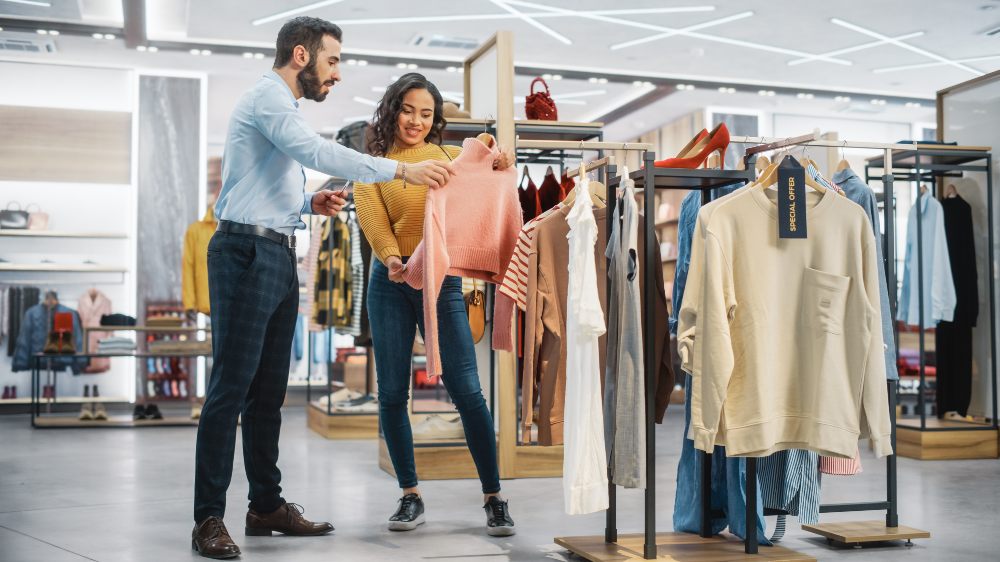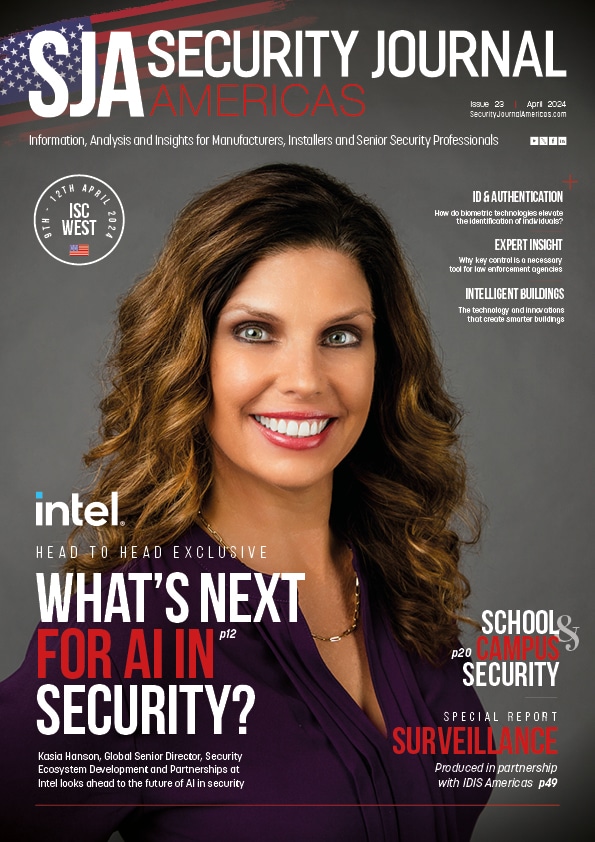SJA Exclusive: From reactive loss prevention to proactive retail security


Victoria Rees
Share this content
John Xiao, Vice President of Marketing for Hikvision USA and Kevin Shumate, Senior Sales Engineer for Hikvision USA discuss optimized security systems for retailers.
Traditional retail video security systems were focused primarily on reducing loss or shrinkage from theft by monitoring via surveillance cameras. While monitoring a single site or multiple locations remains critical – with video management systems (VMS) supporting this goal – today, retailers focus more on technologies with AI that can enhance store efficiency and improve marketing to boost profits.
This encompasses security technologies that deliver smart analytics and insights such as license plate recognition (LPR), people counting, queue management and heat mapping.
Advances in technology
People counting is valuable for malls, outlet stores, single retailers and grocery stores. The functionality remains much the same as it was 30 years ago but with several advancements. Traditional people counting systems were installed over the entrance to scan people as they entered. However, if someone forgot their wallet and returned to their vehicle before re-entering, they would be counted twice.
Advanced security cameras can now scan a person’s height, shoulder width and other details to ensure more accurate numbers. Using a VMS, users can pull data for daily, weekly and monthly reports to analyze footfall trends. Settings can enable a weekly email report displaying traffic at multiple locations.
Attribute search functionality is available on security cameras with specific deep learning algorithms that identify physical characteristics such as clothing color, whether a suspect was wearing eyeglasses or hat or carrying a shopping bag or backpack. This enables retailers to easily search video footage, identify a suspect and communicate precise details to the police when an incident occurs. This is a cutting-edge improvement on the traditional approach to reducing shrinkage.
The latest advances in queue management present a data-driven solution to enhance efficiency and improve the customer experience, with automated alerts for store managers to optimize available registers.
Queue management cameras monitor several things, including how many people are in line at one time and how long someone has been waiting. Cameras can be set up to provide notifications when the number in line exceeds the threshold or when the wait time exceeds a pre-set timeframe. In addition, cameras send real-time notifications to the front-end manager to open another register. Grocery stores like Publix in Florida have a front-end manager that watches the registers all day. Queue management cameras can automate this task and free up their time for other value-added activities.
Improving a business
Heat mapping is something retailers can deploy to elevate security and gain business intelligence to make better, data-driven decisions for optimizing merchandising and marketing in-store. To optimize marketing efforts and maximize revenue, retailers want to know which products customers are most interested in and which promotional products attract customers to the store.
Using fisheye camera technology with heat mapping, fueled by deep learning algorithms, retailers can view a color-coded panoramic heat map that details how much time shoppers spend in specific areas. The more activity in an area, the more red colorization in the image and less activity will be indicated with blue. Heat maps reveal hot spots and dead zones that retailers can analyze and in turn, optimize the placement of sales and promotional items throughout the store based on customer patterns.
Using a combination of people-counting and fisheye cameras, store managers can visualize footfall across individual stores and identify the “hot zones” customers most visit, by utilizing 360° viewing angles.
It also delivers data on how long customers remain in the store (dwell time). Intelligent business insights enable retailers to make decisions about promotions and merchandising based on customer behavior. Business intelligence from heat mapping and other technological advancements will continue to adapt and be adopted by retailers looking to gain an advantage in the market.
Reducing loss and theft
Facial comparison can help retailers identify repeat offenders more quickly. Cameras can surveil larger fields of view and capture multiple people simultaneously, allowing for identification in high-traffic locations.
For example, one California grocer with at least 50 stores throughout the state has facial comparison cameras at each location’s entrance. If someone is caught stealing from one store, it will create an alert in their security system. If that same person went into another store location, managers would receive the alert and immediately be able to ask that person to leave.
Biometric terminals are another solution to deter theft and automate secure transactions. For example, unattended retail shops are big in South America and we’re seeing a trend to develop more of these retail locations in the US. Using touch-free identity authentication biometric readers, these small convenience stores can use a combination of active RFID and facial authentication to enable people to transact securely.
License plate recognition
Parking lot security is also essential for retailers and breakthrough AI technology is delivering a more accurate solution for license plate recognition (LPR) to improve vehicle security and management. LPR cameras can scan a vehicle plate whenever it enters or exits a property, whether or not the parking is gated. With sophisticated LPR technology, a gate and ticket system is not required for vehicles to move in and out securely so that retailers can enforce parking regulations, such as time limits. The license plate number becomes the identifier instead of a ticket.
The LPR technology of today is much more powerful than even a few years ago. Previous LPR systems would scan for text in a scene and identify if specific characters met a particular size. In addition, the camera would identify text that was likely a license plate, but these systems weren’t always accurate. At times, rudimentary LPR cameras would identify truck signage such as UPS or a FedEx logo as a plate, leading to false detection.
With deep learning algorithms built-in, LPR cameras can now accurately identify a vehicle or person in the scene. First, it recognizes a vehicle, extracts the license plate from complex backgrounds, separates and recognizes each character on the plate and reformats the plate information.
The technology comprises a complex and intelligent system that rapidly performs plate locating, character partitioning and character recognition. This has led to better systems with significantly reduced false alerts and alarms. New LPR camera technology also leverages tools like pan, tilt, rotate and zoom (PTRZ) for simplified installation and embeds switchable low-light technology, which produces full-color video and images day and night.
Real-time notifications for these systems heighten their robust capabilities. Plate numbers are unique, so if the license plate of an unauthorized vehicle is known, a gate can be prevented from opening for that vehicle. Functionality is built into the camera for authorized and unauthorized vehicle plates. LPR cameras perform analytics and offer several options for how data is stored. VMS software gives users greater flexibility with choices, enabling notifications and changing settings from a smartphone or PC.
Developing tools
Mobile security solutions are also gaining some interest in the US, especially with the proliferation of food trucks, many of which are leased. For these applications or those within retail supplier warehouses and distribution centers, having security cameras with anti-vibration and advanced streaming capabilities ensures stable live views and image capture. In addition, mobile video recorders support forensic evidence collection and offer key features such as shutdown delays and pre-scheduling startup/shutdown modes.
Video security technology is improving and expanding at a rapid pace to meet the need of a variety of retail challenges and applications.
Heat mapping, people counting and queue detection are some of the most innovative approaches to improving retail efficiency and profitability. In addition, while video monitoring is still essential for retailers, many of today’s cameras combine multiple capabilities into one device, enabling business intelligence, analytics and optimized video monitoring all within a comprehensive system.


